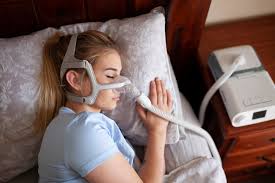
If you’ve been using a CPAP machine for a while, you know that getting a good night’s sleep isn’t just about turning it on. Mastering CPAP Comfort is essential because comfort is everything. For many people, a poorly fitting mask, dry mouth, or noisy machine can turn therapy into a nightly struggle. Long-term CPAP users have learned through trial and error what really makes a difference — and those insights can help anyone improve their sleep experience.
Why Mastering CPAP Comfort Matters
When CPAP therapy is uncomfortable, people are less likely to use it consistently. Even one night of poor sleep can make it tempting to skip therapy. But comfort isn’t just about luxury — it directly impacts how well your therapy works. A mask that fits well, humidification that keeps your airways hydrated, and a stable sleep position all contribute to more effective treatment.
Choosing the Right Mask for Better CPAP
Long-term CPAP users often say the mask is the single most important factor in comfort. Everyone’s face is different, so what works for one person may not work for another.
Full-face masks cover the nose and mouth and are perfect for mouth breathers.
Nasal masks sit comfortably over the nose for those who breathe through it naturally.
Nasal pillow masks are lightweight and great for side sleepers who toss and turn.
It’s also important to replace cushions and headgear regularly. Even minor leaks can dry out your mouth or make the machine noisy, affecting your sleep quality.
Humidification: A Key Part of CPAP Comfort
A CPAP humidifier can transform your therapy. Heated humidifiers add moisture to the pressurized air, preventing dry mouth, nasal irritation, and congestion.
Experienced users recommend:
Starting with moderate humidity and adjusting until comfortable.
Using heated tubing to avoid condensation inside the hose.
Cleaning the water chamber daily to prevent bacteria and maintain airflow quality.
Even a small improvement in humidity can make the machine feel much more natural.
Sleep Position and Habits That Improve CPAP Comfort
Your sleep posture affects mask fit and overall comfort. Side sleepers may need pillows that don’t press against the mask, while back sleepers might elevate their head slightly to avoid leaks.
Other helpful habits include:
Checking the mask before bed to ensure a secure fit.
Keeping the CPAP on a soft, stable surface to minimize vibration.
Sticking to a consistent bedtime routine to help your body adapt to therapy.
Maintenance Tips for Mastering CPAP Comfort
Long-term users emphasize routine maintenance. Dirt, oils, and moisture can build up in masks, tubing, and humidifiers. Neglecting this can reduce comfort and even shorten the life of your machine.
Tips include:
Washing mask cushions and headgear daily.
Replacing tubing every six months.
Checking filters weekly and swapping them as needed.
Listening for unusual noises or leaks in the machine monthly.
Simple maintenance habits go a long way toward making your CPAP experience smoother.
Dealing With Dry Mouth and Pressure Issues
Dry mouth is one of the most common complaints among CPAP users. Solutions that have worked for long-term users include:
Using a full-face mask or chin strap if you breathe through your mouth.
Adjusting the humidifier settings.
Consulting a sleep specialist to fine-tune machine pressure.
Addressing these problems early prevents frustration and helps maintain consistent therapy.
Mental Comfort: An Important Part of Mastering CPAP Comfort
Physical comfort isn’t everything. Mental comfort matters too. Many users feel self-conscious or anxious when starting CPAP therapy. Long-term users suggest:
Joining support groups or online communities.
Gradually creating a bedtime routine around CPAP use.
Keeping track of improvements in sleep and energy to stay motivated.
A positive mindset helps reinforce consistent use and improves your overall experience.
Conclusion: Mastering CPAP Comfort Leads to Big Benefits
Mastering CPAP Comfort is about experimenting and listening to your body. Small tweaks like adjusting mask straps, changing humidity levels, or fine-tuning your sleeping position can transform your therapy from uncomfortable to life-changing.
Long-term users emphasize that patience and persistence are key. Once comfort is achieved, CPAP therapy becomes effortless, improving sleep, energy, and overall health.
